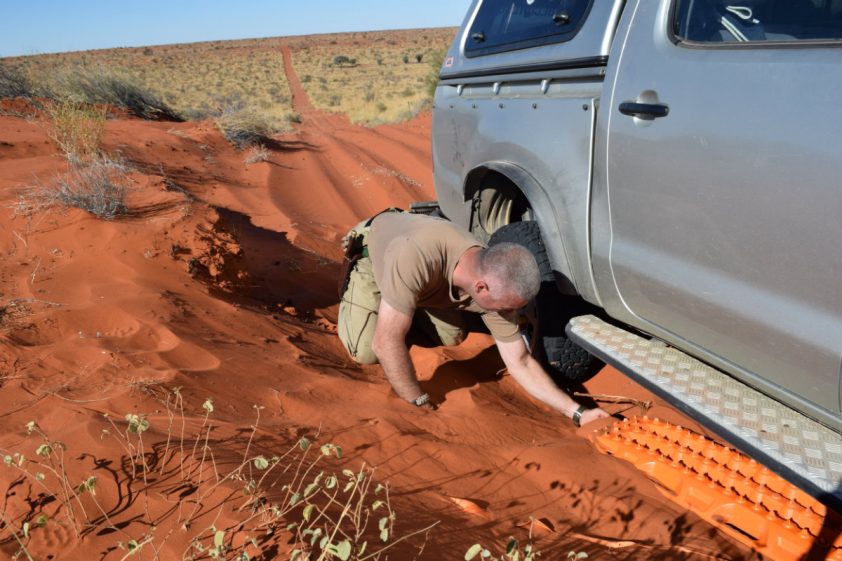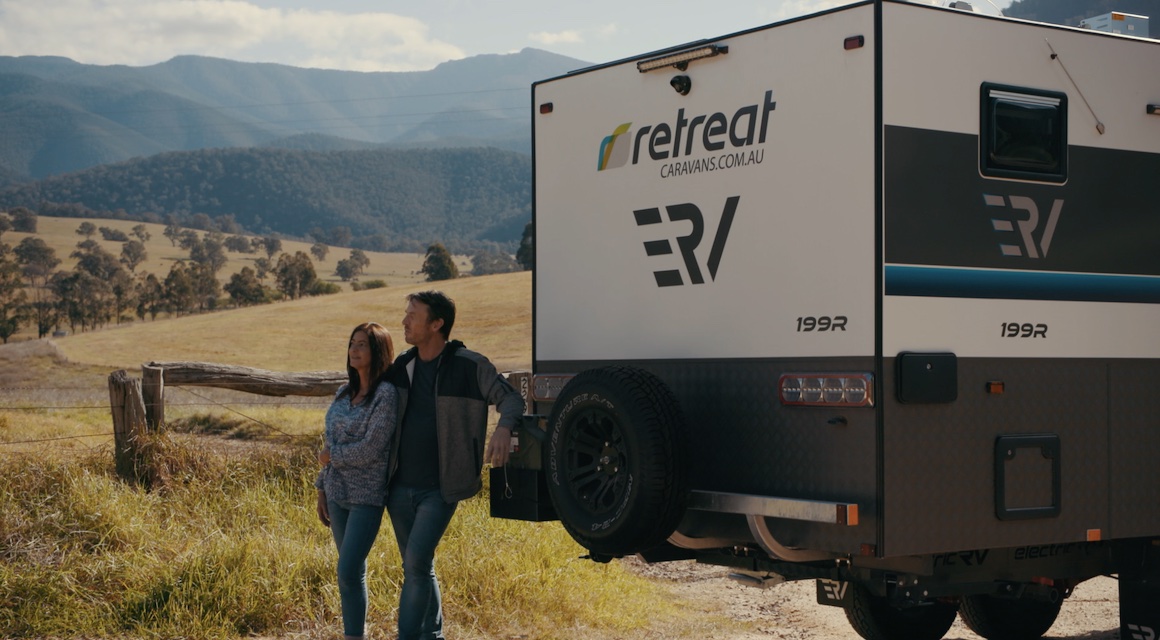With more than 70 per cent of mainland Australia classified as semi-arid, arid or desert terrain, it’s imperative that travellers learn how to give themselves the best chance of survival if stranded in these unforgiving landscapes where rainfall is scarce and temperatures are extreme.
When you find yourself in a perilous situation in the desert (or anywhere, regardless of climate or location), there are four basic principles which, if followed, will give you the greatest chance of survival. These are Protection, Rescue, Water, Food and can be remembered by the acronym PRSF or ‘Please Remember What’s First’.
PROTECTION
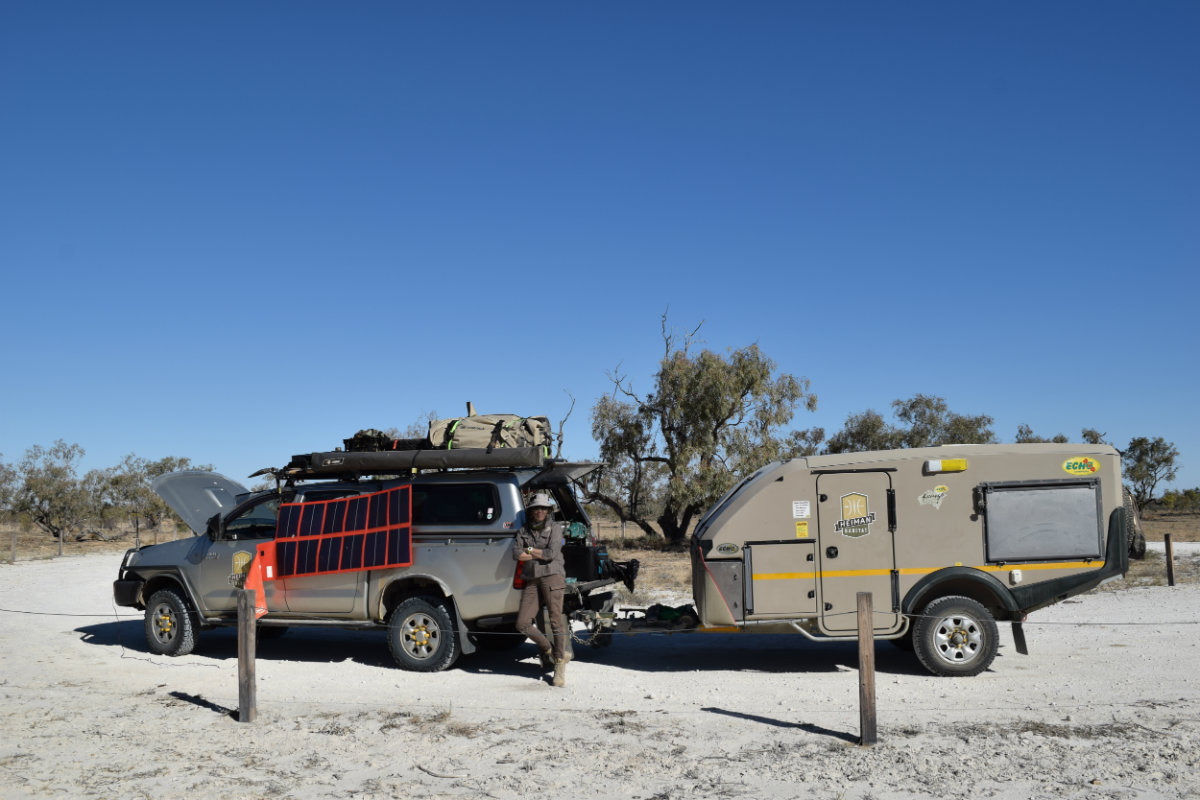
Protecting yourself from the elements should be your first priority, no matter where you are, so seeking or creating shelter should be the first thing you do.
If no shelter is available, you’ll need to make it. Some things to consider include making sure it faces south to maximise shade, keep it out of the wind, and using natural materials to build it, if possible (synthetic products may retain heat). If you are stranded with a vehicle, that will be your best form of shelter so use it or modify it to suit your needs. If you don’t have a vehicle, you’ll have to improvise a shelter from your supplies (such as a survival blanket) and what you can find lying around.
Depending on your location and the climate, shelters above or below the ground may be necessary. If you’re in the desert, consider digging a pit to lie in to stay cool or, in cooler climes, try and build your shelter off the ground.
RESCUE
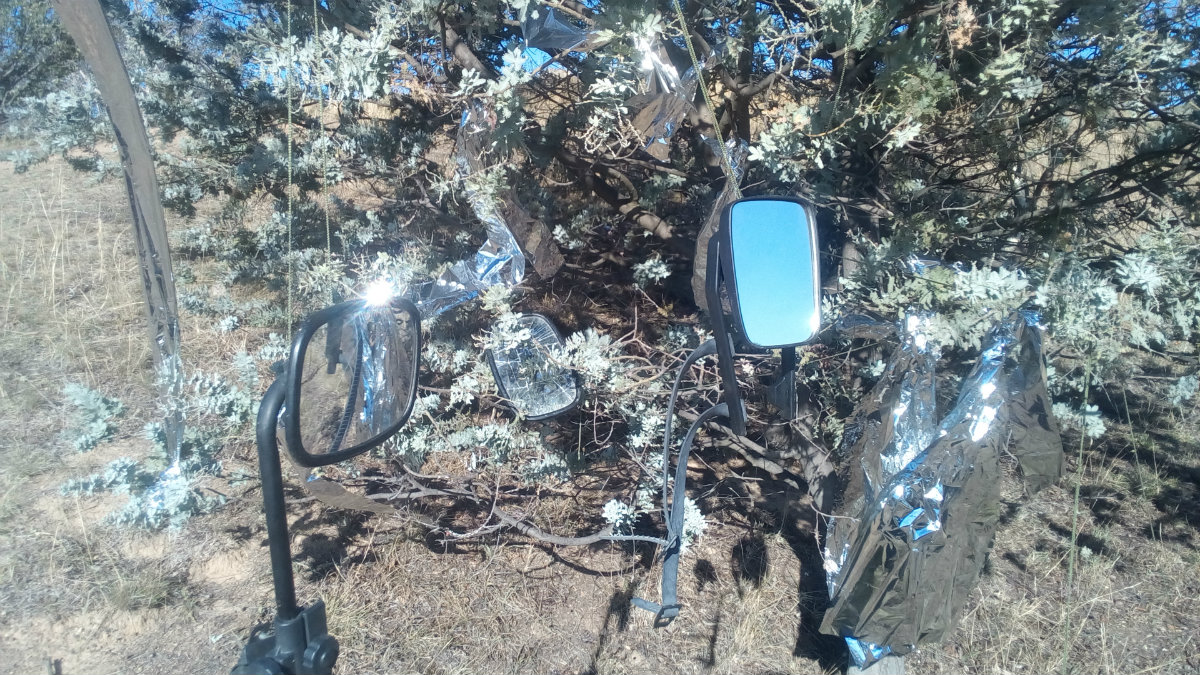
Once you’ve got your shelter sorted, you need to give yourself the best chance of being rescued by attracting attention in any way you can. One of the best is with fire. Not only will it keep you warm, fires can often be seen for miles. Ply your fire with green vegetation to make it extra smoky and more visible.
Next, start making your ‘tinsel tree’. Grab anything shiny and silvery you can find – mirrors, tin foil. reflectors, etc – and string it up to a tree or shrub. When they catch the sun’s rays, they’ll become highly visible to would-be rescuers.
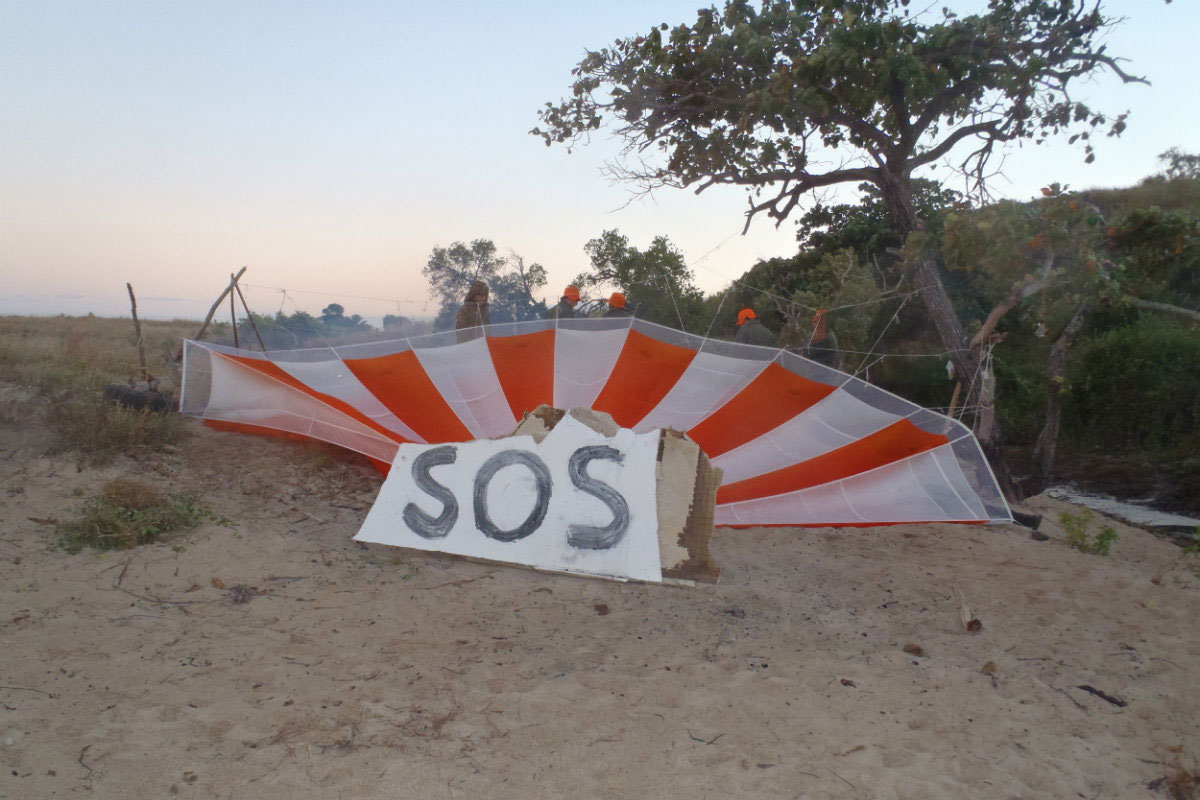
If you are carrying a survival blanket (and you definitely should be!), lay it out and pin it down with rocks or other heavy items to attract attention from airborne rescuers. If you don’t have a blanket, you’ll have to improvise using rocks, clothes or anything that will stand out against the terrain. Your signal should be at least 6m high and one of the following letters:
V – indicates that you require assistance but no one in your party in injured. This is considered a general call for help, or:
X – indicates that you, or someone in your party, requires medical assistance. This is considered a more urgent request for help.
If you’re travelling in a vehicle which breaks down, it is vital that you stay with the vehicle. A large car or truck is much easier to find than an individual person. If you have to leave the vehicle for some reason, travel only in the evening or early morning when it’s cooler, and only travel if you’re 100 per cent certain of your destination and that there is water there. Don’t assume you’ll be able to carry enough water with you. If you aren’t certain of those two factors, stay put!
WATER
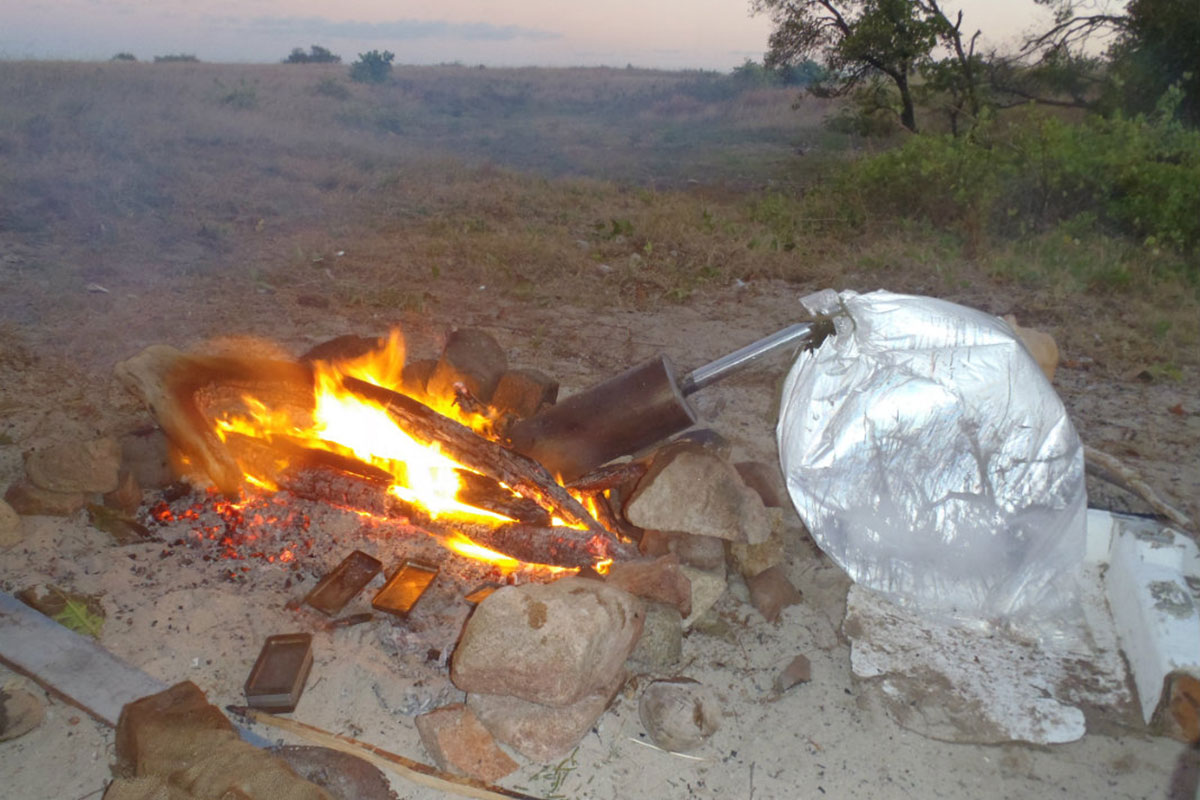
Water is the next vital component of your survival plan. It’s best practice, when travelling in the desert, to carry at least 6L of water per person per day. Then add enough for an additional 72 hours for emergencies. And, contrary to popular belief, you should not ration your water if you become stranded. There’s an old saying: ‘The best place to store water is in your stomach’.
If you aren’t carrying enough water, you’ll need to try and find some. Your best bet is to look for green vegetation, which indicates a nearby or below-ground water source, or to follow animals to water. If you’re on the move, head for lower land as water flows downhill. Always pack transpiration bags (or garbage bags) in your survival kit and learn how to use them.
As well as finding and drinking enough water, managing your own perspiration will go a long way to helping you survive. It’s important not to exert yourself in the desert, so you don’t sweat any more than necessary. The best ways to do this are to rest and protect yourself from the sun. If you need to move around to collect water or build shelter, do it in the cooler evening or early morning. Avoid smoking or drinking alcohol (even if you’re thirsty!) as these will dehydrate you quickly. And, if things get really dire, limit talking as even that causes you to lose some water through your breath.
FOOD
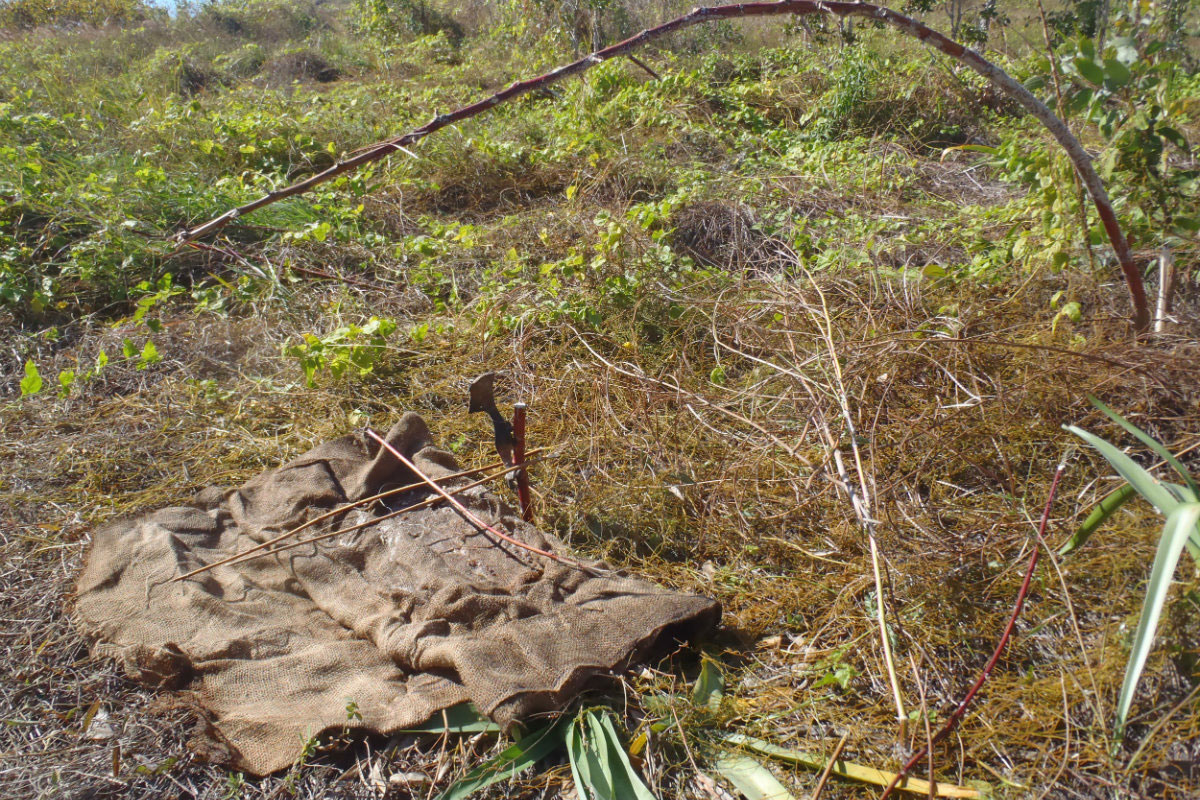
Digesting food requires water, so don’t eat any food unless you have water available as well. If you do have water but your food is limited, look around you! There is more bush food, even in the desert, than you’d expect! Think insects (full of protein), seeds, beans, game, fish, etc. You may be able to fashion a snare, trap or fishing line from supplies in your first aid kit or vehicle.
MEET THE AUTHOR
Scott Heiman
Scott is an Environmental Scientist with 25 years combined service in the Army and AFP. He is the Managing Director and Principal Consultant for Heiman Habitat. Combining his skills and professional experience, Scott is a freelance writer and consultant focusing on issues relating to environmental management, bush-craft, remote area operations and camping.

